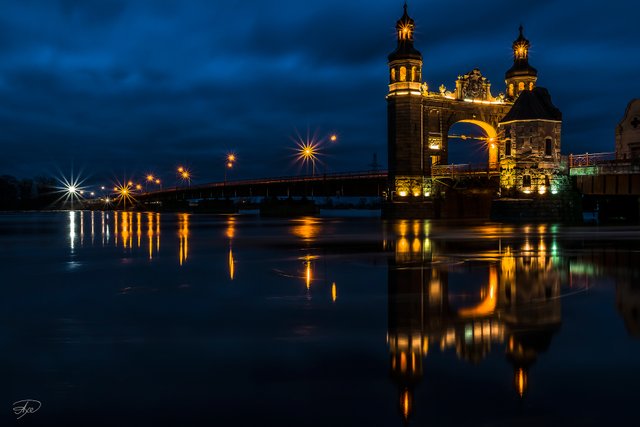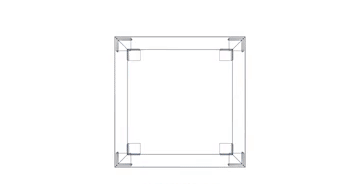Killerpix contest #19 Theme - Bridges - Entry 1 - QUEEN LOUISE BRIDGE
During the Seven Years’ War in 1758 a temporary bridge across the Memel River was constructed by Russian troops. In 1767 a new bridge across the river was built. It was based on 36 pontoons and was 340 meters long. It could be pulled apart in its centre to allow passage for ships and rafts. Also the bridge was pulled apart in winter and during a spring flood. In 1807 this bridge was burned by retreating Russian and Prussian armies. Then, in a year the pontoon-bridge was restored.
The construction of Queen Louise Bridge which was 416 meters long (the river width was 220 meters) began in 1904. The bridge leaned on two piers and the ascent of three arches made the bridge known as a town symbol. On October 18, 1907 in honour of the Treaties of Tilsit centenary the traffic across the bridge started. Furthermore, memorable silver and bronze medals were engraved for this memorable day. From the town-side an arch was built. It resembled a gate and was decorated with towers made of sandstone. Its headroom was made in the style of Late Renaissance and was reminiscent of Danzig motives. The portal was decorated with Queen Louise’s bas-relief which had a form of a cartouche (3,6 meters wide and 4 meters high) designed by sculptor Stephan Walter in Friedenau and casted by «Martin und Piltzig» company in Berlin. Two bas-reliefs depicting traveling by water and by land were placed over pedestrian passages. A leaf of the bascule bridge was 12 meters long, the carriageway was 7.2 meters wide. The narrow gauge railway led along the carriageway to Mikitten (modern Mikitay, Lithuania). In 1913 the railway was lengthened to Schmalleningken (modern Smalininkai, Lithuania). The middle part of the bridge consisted of three tracery iron arches; each one was 105.6 meters long; the highest point of every arch was 19 meters. The leaf of the bascule bridge could be moved into an upright position in one minute by means of an electric motor drive.
The bridge adornment was the main portal veneered with Gotland sandstone. The portal was decorated with towers made in Baroque style on the both sides. Queen Louise Bridge did not exist long. On October 20, 1944 the Wehrmacht explored it before the Red Army went ashore on the right river bank. By July, 1947 a new wooden bridge had been laid out. The only portal of the old bridge had preserved. The date «1907» which was still visible on the portal was easily changed into «1947». The USSR coat of arms was placed instead of Queen Louise’s bas-relief. Tiled roofs with peaks disappeared from machine houses, but the hand winch used to move the bridge is still operable.
By spring, 1965 the wooden bridge had ceased to exist. The modern bridge was constructed in 1965-1966. Restoration of the portal was carried out in 2002-2003. In the frame of the restoration works Queen Louise’s bas-relief was put on its original place.
Enjoy the scenery :)
| Category | TRAVEL/LANDSCAPE |
| Camera | Samsung NX1000 |
All photoes are for sale in HQ digital format for Steem/SBD, please contact if interested
at steemit.chat @axeman - only @originalcontent / @originalworks
If any questions regarding photography settings/conditions, please comment

Upvote if You LIKE / Resteem if You CARE / Follow if You LOVE

...live for the moments You can't put into words...

BeScouted
35Photo
Facebook


BeScouted
35Photo
Facebook



A beautiful photo, I wish you success :)
Thank you.. will see :)
I love bridges that pulls apart for ships and rafts. We have one in Turkey called Galata Bridge. A nice place to visit and take photos of the fishermen.
A really beautiful photo and great commentary!
This bridge really has own history :)
Awesome shot!! Good luck for the contest ;)
Thnx for good wish :)